The San Jose Sharks have won eight of their last 11 games to move up in the standings. The early season problems lasted a mere two games. San Jose has looked like a good team since, posting an 8-3-0 record. They’ve been competitive in every game in this surge.
What has been behind this strong run? The Sharks have done it mostly with defense. Over the 11 game stretch, the Sharks have given up just 21 goals. Excluding empty-net goals, they’ve allowed more than two goals in a game only once. If the other team is scoring two goals or fewer, pretty much by definition your team is in every game.
Defensive Success
San Jose is among the league’s best in a whole series of defense-oriented categories. They’ve been stingy when it comes to giving up goals. Part of the success is keeping opportunities away from opponents. The Sharks have allowed fewer shots per game than any team in the league.
The penalty kill is second best in both percentage (89.6) and goals allowed (five). After giving up three power play goals to the Philadelphia Flyers in the season opener, the penalty kill has been the league’s best and it is not close. In the last dozen games, San Jose has allowed opponents only two power play goals and is sporting a penalty kill rate of 95%.
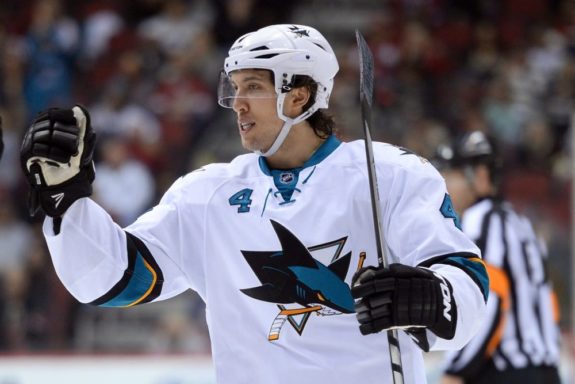
For the season, the Sharks are second best in goals against per game (GAA) at 2.31, but again, giving up nine goals in the first two games distorts this figure. In the last 11 games, the Sharks have a stellar 1.91 GAA. Excluding the empty net goals allowed, the figure is miserly 1.73.
While Sharks and their commitment to a strong defensive system deserves praise, the star is goalie Martin Jones. Jones has been on a tear, giving up just 11 goals in his last eight starts, delivering a .949 save percentage. Coupling good defensive work with excellent goaltending is a recipe for NHL success.
Scoring Woes?
Some have wondered how the Sharks would replace the goal-scoring of Patrick Marleau. Last season, four Sharks combined for half the team’s goals: Joe Pavelski (29), Brent Burns (29), Logan Couture (25) and Marleau (27). Two of the four have contributed no goals for San Jose. Perhaps you’d heard Marleau now plays for Toronto, while Burns has yet to get a goal. Even so, the Sharks are scoring at a clip slightly ahead of last season. In regulation, San Jose averages 2.69 goals per game this season compared to 2.60 last season.
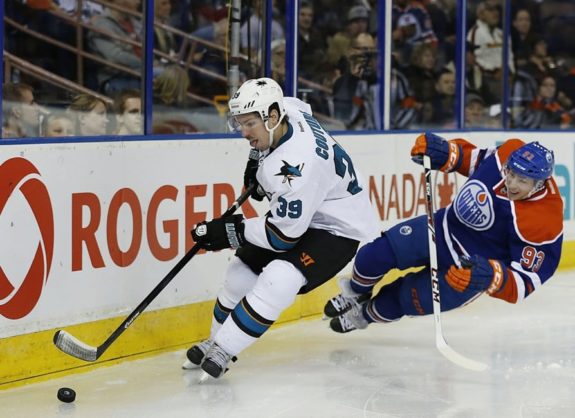
Logan Couture’s eight goals lead the team, but, unlike last season, solid secondary scoring is helping. The Sharks have eleven players who have scored at least two goals. San Jose’s defensive group led the NHL in scoring last season (49 goals), but have managed just three so far this season. No matter. The players on the recently formed top line of Couture, Tomas Hertl, and Melker Karlsson have combined for seven even-strength goals. The players making up the second line (centered by Joe Thornton) have six even-strength six goals, while the third line (centered by Chris Tierney) has eight and the fourth line (most frequently centered by Ryan Carpenter) has three.
Scoring Opportunities
The power play remains an area of concern, especially the top unit. San Jose has scored ten power play goals and is middle of the pack in both percentage and total goals. Half the goals have come from skaters on the top unit, half from the second unit. The second unit has been the more effective of the two. While some want second-unit defenseman Marc-Edouard Vlasic off the power play, he is among the Sharks best in several power play categories.
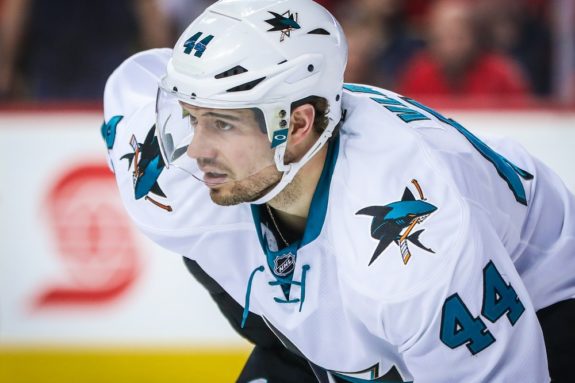
The Sharks are scoring at a 22% higher rate (measured as goals/time-on-ice) with Vlasic on the power play as compared to Burns. Ultimately, the top unit needs to be more productive; the second unit is holding up its end and then some. If the top unit does come around, the Sharks become another level of dangerous.
Winning Close Games
The Sharks went into overtime for the first time in their most recent game, their thirteenth of the season. Eight of the Sharks’ thirteen games were one-goal games at some point inside of two minutes left, though only one most recent game finished regulation in a tie. This bodes well for the Sharks. Experience in pressure situations can help this team, which features five skaters (six if one includes Kevin Labanc, recently sent to the AHL San Jose Barracuda) and one goalie with less than 82 games of NHL experience.
Quality Competition
The Sharks are riding their stingy defense. And while the numbers are excellent, it is not because the Sharks have faced low-scoring teams or less than stellar scorers.
San Jose has played against 11 different teams, roughly 1/3 of the league. As of Sunday night, 18 NHL players had scored eight or more goals. One of the players, Couture, plays for San Jose. Of the remaining 17, San Jose has already played against nine of these players, more than half the list. They’ll add a tenth player in their next game on Wednesday against Nikita Kucherov and the Tampa Bay Lightning. Kucherov leads the NHL with 14 goals while Tampa Bay leads the NHL in team scoring. Four of the games in the Sharks’ 11-game surge have come against high scoring teams – and Tampa Bay awaits. The Sharks, their defense, and red-hot goalie Martin Jones are not merely feeding on bottom dwellers, they are succeeding against strong competition.
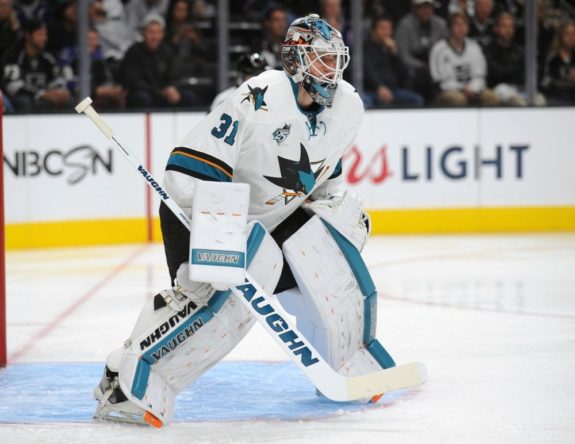
The 8-3-0 run has led to a nice upward move in the standings. Whether the Sharks defense holds up against a scorching Tampa Bay offense remains to be seen. Yet it isn’t necessary for San Jose to defensively dominate every game this early in the season. It is, however, the critical element of the Sharks current upward move. The Sharks must remain among the league’s stingiest teams if they expect to remain in the upper part of the standings.
Zeke’s Notes
• The long-anticipated trade of Colorado’s Matt Duchene finally happened. He went to Ottawa in a three-team deal which also involved Nashville, who acquired Kyle Turris in the process. Colorado captured seven assets (mostly prospects and draft picks) for Duchene. The trade was a classic “now for later” deal.
Many considered Duchene as a good fit for San Jose. Should San Jose have matched the picks and prospects to get Duchene? I’m not the biggest fan of Duchene, but if the Sharks had cobbled together comparable prospects and picks, the value made sense. Its unlikely any of the traded pieces turn into a player the level of Duchene. San Jose has plenty of good depth players, they need players at the upper end, especially as Joe Thornton ages.
Still, there is a difference between a good value trade which makes the team better and one which makes the team great. The Sharks didn’t make restricted free agent offers in the offseason (at least nothing was made public) to several forwards who are comparable to Duchene, including Ryan Johansen, Bo Horvat, and David Pastrnak. If they passed on these players, it makes sense they passed on Duchene.
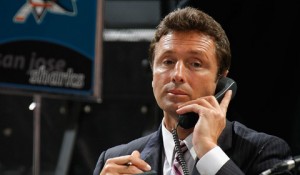 I suspect general manager Doug Wilson has his sights set on John Tavares, an elite player, over a very good player like Duchene. I think it is worth the risk. While Duchene would make San Jose better, Tavares can make San Jose great. Further, with this deal, both Ottawa and Nashville added new salary cap constraints, meaning it will be harder for either team to bid for Tavares if he makes it to free agency.
I suspect general manager Doug Wilson has his sights set on John Tavares, an elite player, over a very good player like Duchene. I think it is worth the risk. While Duchene would make San Jose better, Tavares can make San Jose great. Further, with this deal, both Ottawa and Nashville added new salary cap constraints, meaning it will be harder for either team to bid for Tavares if he makes it to free agency.
• In our last article, we discussed the three players in a recent trade rumor: Chris Tierney, Mikkel Boedker, and Paul Martin. We concluded that trading these players made little near-term sense. The reasons showed up in the two games following the article. Boedker and Tierney teamed up for an important goal in the win over Nashville. In the same game, Vlasic went out with a concussion (missing the next game as well), reducing the Sharks defensive group to six healthy players. Trading players may make sense at some point, but we are not there yet.